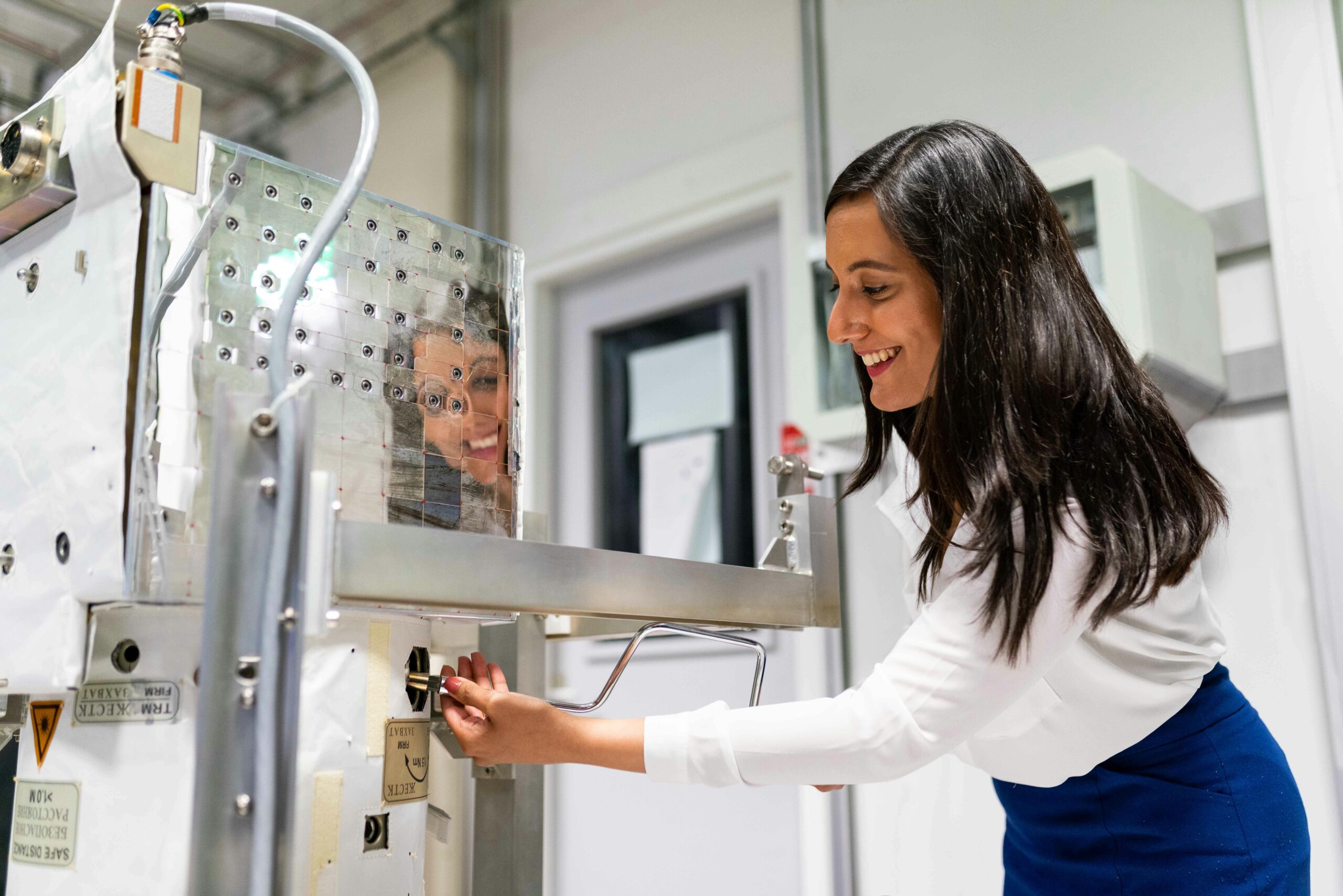
If you haven’t seen the film ‘Hidden Figures’, starring Taraji P. Henson, Octavia Spencer, and Janelle Monae as three pioneer black female scientists and computer programmers who worked at NASA in the early 60’s (before they could vote and while segregation was still a thing) and were pivotal to ensuring the success of some of the early missions, we encourage you to do so. Stat.
The title alone gives you an indication of why this film is important – for too long, the stories of pioneer women of color in America have been hidden away in favor of more male, white-centric stories and lead characters. For two weeks in a row it was the number 1 at the box office, beating out ‘Rogue One: A Star Wars Story’. Needless to say, the public has been waiting for this story for a LONG time.
But the inspiration doesn’t just stop with the lives of Katherine Johnson, Dorothy Vaughan and Mary Jackson. Today, the representation of women at NASA is a far cry from the 60’s. For the first time in history, NASA’s astronaut class is 50% female, and they are part of a mission training to go to Mars. NASA also has an initiative to encourage more women to join their astronaut program, and clearly something is working.
Some recent news has also given us encouragement that we should expect more women climbing up the ranks at the Space Administration. Earlier this year it was announced that astronaut Jeanette Epps will become the first African-America, and 13th woman, to board the International Space Station as a crew member.

She will officially join the crew in May 2018 as a flight engineer for Expedition 56 and stay on for Expedition 57. The 6 months in total she will spend living up in space will be alongside three other astronauts, all of whom are men. The ISS, which spans the length of a football field and weighs about 1 million pounds, orbits the planet 250 miles from the Earth’s surface. It has been up there for 15 years inhabited by 220 astronauts from 18 different countries, most of them being American.
Before being selected for the 2009 Astronaut class, Jeanette worked as an aerospace engineer, but now she will soon blaze a new trail that is literally out of this world. In an interview with Lenny Letter after NASA made the announcement, Jeanette says she was first inspired to become an astronaut at the age of 8 upon seeing Sally Ride, the first American woman to go into outer space, proving visibility and representation matters.
“My older brother suggested it when I was nine years old. He came home from college, looked at my grades, and said, “You can be an aerospace engineer, a doctor, maybe even an astronaut. They’ve selected women.” This was around when Sally Ride was selected for Astronaut Group 8. I thought, Ha, they’ll never select me for an astronaut, but I can definitely become an aerospace engineer,” she said.

Because of her extraordinary achievement and knowing the hard work it takes to get to the level she is at, Jeanette also believes it is important to encourage young girls to get into STEM industries.
“I realized that getting people involved in STEM is actually a national issue. We don’t have as many people as we did in the past going into the technical fields. There are tons of jobs out there, but no one’s taking them. I want to let young people know that they can contribute in multiple ways…And I want to be a role model for those young girls who have low self-esteem and a lack of confidence, and say, “Hey, look, I was in your shoes at one point. I had no clue what I was going to do.” Not just what I was going to do, but also how to get from point A to B. How do I do it if my parents aren’t involved in that world? How do I do it alone?” she said.
It’s no surprise that she is very supportive of the message ‘Hidden Figures’ is sending to young girls, especially young girls of color. As part of NASA’s collaboration with the film in promoting it, Jeanette was featured in a “Modern Figures” video series, sharing her advice of never giving up despite the difficult challenges that may come your way.
Another woman who is blazing a trail for NASA and women in STEM is Lindy Elkins-Tanton, an astrophysicist who will be leading one of 2 new missions to explore asteroids. She will lead one of the Discovery Program missions which will utilize robotic technologies to help scientists understand how planets and other bodies separated into their layers – including cores, mantles and crusts – early in their histories.
Lindy is leading the Psyche mission, which is slated to launch in October 2023, arriving at the asteroid in 2030.
“This is an opportunity to explore a new type of world – not one of rock or ice, but of metal. 16 Psyche is the only known object of its kind in the solar system, and this is the only way humans will ever visit a core. We learn about inner space by visiting outer space,” said Lindy in a statement released by NASA.
Lindy works at Arizona State University as the director of the director of the School of Earth and Space Exploration (SESE) and says this mission will enable humans to take a look inside a planetary core.
“Having the Psyche Mission selected for NASA’s Discovery Program will help us gain insights into the metal interior of all rocky planets in our solar system, including Earth,” she said.

Her leadership is being hailed as a major win for the wider mission to encourage more girls to get into STEM fields, as the number of jobs that need filling are outpacing the number of people graduating with STEM degrees.
As Katherine Ellen Foley writes on Quartz.com, “Elkins-Tanton’s leadership matters for the field. In addition to being extremely well-qualified—she’s been awarded multiple fellowships and awards for her work from organizations like National Academies of Sciences, the National Science Foundation, and Oxford University—she’s a woman in a field with a pronounced gender gap.”
Which brings us back to the influence of a film like ‘Hidden Figures’. It cannot be underestimated the impact it will make for young audiences to see three pioneer black women doing extraordinary work. Outside of film, women like Lindy Elkins-Tanton and Jeanette Epps are carrying the torch for the next generation.
“Personality stereotypes of male scientists and the idea that women are simply less able to do math and science are fueled by pop culture references and the fact that there are fewer women in leadership roles in the sciences,” writes Katherine Ellen Foley.
We have no doubt that we will be posting numerous articles in the future about women’s contribution to NASA and STEM fields.


















4 thoughts on “Hidden Figures No More: These Women Have Been Chose To Lead Important NASA Missions”